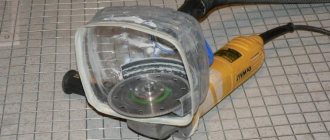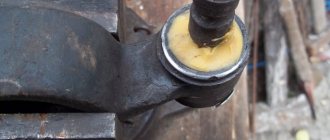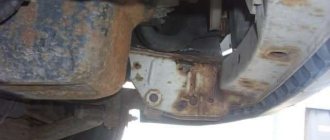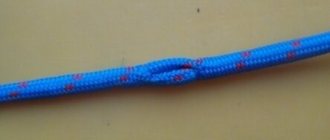The most reliable way to organize water supply for a country house is to connect the internal water supply network to the existing system.
But it is not always possible to shut off the main water supply, so the question arises about making a connection to the water supply under pressure. This operation can be performed either with or without welding. But in any case, such work must be carried out by qualified specialists if they have special permission and a formalized permit to carry out the connection.
Obtaining permission to carry out work
Considering the importance of the water main as an object for providing a vital product, permission to make a tie-in must be obtained from the local water utility department. The method of execution is not important - with or without welding.
A connection made without permission is considered illegal and is followed by administrative measures with financial penalties.
An approved copy of the site plan is issued by the Federal Center, which registers land ownership, and the technical conditions for connection are formulated by the Vodokanal department. They must contain the following information:
- place of insertion;
- main water pipe size;
- data that may be needed when making inserts.
Such a document can be executed by a specialized design organization, but this does not negate its approval by the water utility.
The document for the production of the insert will be registered at the local sanitary and epidemiological station office. The set of documents submitted to the SES is accompanied by a statement about the need to connect to the central water supply network.
Taking into account all sorts of restrictions, it is obvious that saving money by applying your own efforts is only possible when performing excavation work. The rest can only be performed by specialists with special permits.
Connecting to a water supply under pressure is prohibited under the following conditions:
- the pipeline is made of large diameter pipe;
- in the absence of a connection to the central sewerage system;
- if the tie-in does not provide for the installation of water flow metering devices.
Some problems
First of all, it is necessary to talk about prohibitions and punishments. The owner of the apartment, inside his home, can do any redevelopment (meaning plumbing or heating). He is allowed to make any diversions from the main highway according to his needs and desires. But only after resource metering devices.
Plumbing work Source ria.ru
And it is even forbidden to approach a public pipe. Regardless of whether it is plastic, cast iron or steel. Only certified specialists have the right to work with the central water supply pipeline, and even then, only with the knowledge of the city water utility. Unauthorized tapping into a public pipe can lead to big troubles.
Therefore, in case of emergency, when you desperately need to make a new branch from the central pipe to your home, it will be easiest to contact the supervising organization. Write an application listing your needs and pay according to the price list. The office will send specialists who will do everything at a professional level.
Some may say that it may take too long for the wheel to turn and produce results. But if you want to do everything yourself and quickly, it’s unlikely to speed up the process. Perhaps it will drag on indefinitely.
Plumbing team on site Source plombier-pro.fr
Necessary steps to obtain permission for independent work with a central water supply:
- Go to the city water utility and submit an application.
- Providing all necessary documents for housing ownership.
- Written justification for the purpose of the tie-in, indicating the exact location and technical characteristics of the future branch.
- A trip to the SES, if the city water utility has given permission.
- Next with all visas to the design organization.
- After drawing up a project, it needs to be registered.
- And then an estimate of all the work is drawn up and a real permit to work is given.
Right off the top of my head, everything will require much more time. And most likely this approach will cost more. Therefore, it is better to be patient and act through official channels. And don’t get yourself into trouble by being arbitrary.
Device for tapping into water supply under pressure
Crashing into a pipeline system and stopping pumping is associated with significant material losses. To perform such an operation, you must:
- Relieve the pressure in the water supply and drain the water in it. This is due to a significant interruption in water supply to all facilities involved in this pipe.
- Make a hole in the pipe wall using an accessible method.
- Install the outlet pipe and mount a tap or valve on it.
- Install a connection unit from the outlet to the internal wiring in the house and on the site.
- Check all connections for leaks.
- Fill the pipeline with water, remove any air pockets, and increase the pressure in the system to the required value.
It is obvious that the time and energy costs of this connection technology are very significant.
Therefore, a technology has been developed and used to install bends on pipes under pressure without stopping the functioning of the water supply system.
Before making a tap into a water supply under pressure, a special saddle clamp, the so-called “saddle,” should be installed on the pipe. It is a split coupling that is tightened with screws.
A rubber gasket is used for sealing. At the coupling half, a flange or piece of pipe is made for inserting a drill. The rubber seal option is used when making inserts into plastic pipes.
When drilling pipes made of cast iron or steel, a saddle is used in the form of a covering layer of plastic material applied along the inner surface of the coupling.
Currently, universal transactions made from metal strip are widely used. Their design is reminiscent of a car clamp.
Taking into account the constant improvement of the tool, we pay attention to the device in which the cutter is installed and a tap installed on the side is used to drain water when passing through the wall.
When cutting into a plastic water pipe under pressure, built-in heating elements are used, which allow the wall to be melted without cutting.
For use with large diameter tubes, three-piece saddles are used.
Installation of the saddle
This structural element is fastened with screws.
In this case, tightening must be done by tightening the screws alternately so that the halves of the coupling converge evenly, without distortion. On steel pipes, careful surface preparation is required, including treatment with a wire brush or emery cloth.
When drilling to insert into a cast iron water pipe under pressure, the axial force on the tool must be applied with less pressure to avoid breaking the wall, since cast iron is fragile.
Working with polymer reinforcement
It is even easier to insert into a polymer pipe. One of the methods does not require complex and most precise cutting of the pipeline. This is especially true when it is necessary to insert plastic elements of large diameters, which can be deformed under the influence of the insertion.
Insertion with pipe installation
To implement this method, you must first purchase a piece of pipe equipped with a pipe from a hardware store. The diameter of the workpiece must correspond to the cross-section of the water supply pipe.
From the purchased blank, a pipe is cut out in such a shape that one of its ends is equipped with a “half-pipe” type element, the main task of which is to ensure the overlap of the future insertion site
The manufactured blank will create, as it were, a second wall of the pipe. In the workpiece fixed on the pipe, a hole is drilled with a core drill, the diameter of which corresponds to the size of the pipe.
Liquid silicone sealant is applied to the inner surface of the mounted flange. The area around the hole is covered with the same composition, not reaching the cut line by 1 cm. The prepared flange is mounted on the pipe.
To tighten the edges on both sides, two additional fasteners are used. They should be tightened very carefully so as not to squeeze the sealant out from under the flange. The remaining glue that has come out is removed with a napkin.
If you have to make a connection on a plastic pipeline, the system pressure of which is minimal, you can safely use wide construction tape instead of a clamp.
Installation of adapter and saddle
For a sealed and at the same time quick connection of the pipeline, it is convenient to use ready-made elements:
- Adapters – used for inserting pipes D 100-110 mm.
- Saddles - chosen for inserting thin pipes D 32-40 mm.
The saddles are two-part crimp structures that are convenient to install if you need to tap into an unplugged system.
There are modern models of the device on sale, equipped with a heating coil and a cutting cutter with which a hole is made.
To set the required accuracy of welding parameters, when carrying out the procedure, it is necessary to focus on the bar code located on the body of the part
Cutting into a pipe using an adapter is quite simple. The work is carried out in several stages:
- If the pipe is connected to communications, shut off the water in the system.
- Use an electric drill equipped with a crown to make a suitable hole in the desired location.
- Install the adapter onto the prepared area, not forgetting to lay a soft rubber seal.
- Tighten the structure with bolts.
If the design of the embedded element does not provide bolts, construction sealant is used for fixation. To do this, the composition is applied to a degreased surface. The nut is carefully tightened, and any excess product that comes out is removed.
This article is devoted to the technology of inserting pipeline branches into a plastic water main, which we recommend that you read.
Methods of cutting into a pipeline
Connection to the pipeline is made in different ways. The simplest of them is as follows.
Watch the video
How I make a pressure tap into a water pipe
Let's consider the simplest method
It consists of installing a transitional locking element before drilling the wall on the pipe. For this purpose, a ball valve mounted on a saddle is used. In the open position, it passes the drill through the through hole.
To protect against water splashing onto it, the top edge of a plastic bottle is put through the hole in the lid. After passing through the pipe wall, the drill is removed from the hole and the ball valve is closed.
If the tap into the water pipeline is made into a steel pipe, you can do it even simpler - just weld a branch with a threaded end to the pipe and install the same ball valve on it. Further actions are performed according to the specified scheme.
Built-in cutters
Such tools are equipped with a core drill to make a hole and a safety valve to contain the back pressure of water.
The tool is rotated manually by acting on the handles. The professional tool operates using an electric drill drive. The end of the pipe is equipped with a locking device through which the tool is inserted inside.
In the non-working position, the pipe is locked with a valve, which opens when you press it. A rubber seal in the shape of a ring is installed around the circumference of the pipe.
Devices of this design are most often used for inserting into polyethylene pipelines
Once drilling is complete, there may be a small amount of water leaking through the nozzle. The cutter is moved in the opposite direction until it touches the valve, it closes and stops the leak.
The side outlet must be in the closed position and opens only after the installation of the water supply system in the house and on the site is completed.
Using Drill Clamps
Quite often, drilling clamps are used for tapping into pipelines under pressure. The sales package for such products usually includes attachments and rotary connectors.
Structurally, such products can be made in several versions and are used to connect pipes with a diameter of 80 millimeters or more. When drilling, be sure to deep core the pipe to avoid the drill slipping along the inclined surface.
Other insertion methods
You need to pay attention to the standard tapping device, popular among water utility workers. It looks like a pipe with multilayer seals. It is put on the main pipe and secured with long pins.
Watch the video
The tightness of the device is so perfect that no leakage occurs when the drill passes through the wall. This device is equipped with a pressure gauge, a change in the indicators of which indicates the completion of drilling.
Tap for metal-plastic pipe
Metal-plastic pipes, as well as cross-linked polyethylene pipes, are being used more and more often, so special fittings and fasteners have been developed for them. When working with such material, there are 3 ways to connect the tap.
Installed crimping valve
Crimping. Special taps made using the threaded fitting method are used.
Ball with crimp nut
Ball valve for crimping. For this method, special locking mechanisms have also been developed that secure the pipe inside the tap using a special crimper.
Crimping
Through the transition fitting.
All methods are quite simple. For the first you will need:
- Trim the end of the pipe evenly. This is done with special scissors or a knife.
- The nut is unscrewed from the ball valve and put on the pipe; the same must be done with the clamping ring.
- Flaring is done using a special expander or a small tube.
- The pipe is put on the special valve fitting until it stops.
- The sealing ring is pulled on top.
- The clamping is carried out by the main nut.
- For greater convenience, it is better to use two wrenches or adjustable wrenches.
The last method is carried out using the same method, but first a fitting with external or internal thread is installed, and the tap is already fixed to it. You will need to resort to packing the cutting, as described for the metal pipe.
Crimper
The crimping method is carried out as follows:
- The end of the pipe is prepared as described above.
- A sealing sleeve is put on the pipe and moved away from the edge.
- The pipe is expanded using a special tool.
- The locking mechanism is inserted.
- Using special pliers, the coupling is pulled onto the joint.
Note!
In another crimping option, the tap already has a crimp coupling installed. It is simply put on the pipe, and the protruding part is compressed using special pliers. In this case, you should not immediately unclench the tool; you need to hold it for a couple of seconds so that the metal acquires the required shape.
Rules for determining the insertion location
Typically, the connection to the water supply is made in the nearest inspection well on a straight section. The basic rule is that the outlet pipe must be laid below the freezing level of the soil.
For middle latitudes it is 1.2-1.5 meters. But the trenches should be about half a meter deeper, since a drainage layer of sand and gravel will have to be constructed.
In some cases, the pipeline is additionally insulated with foam plastic materials, and a heating cable is installed with automatic switching on at a temperature of 0-+2 degrees.
The water supply branch is equipped with a drain valve installed directly behind the tap.
Before you start digging a trench, you need to make sure that it does not intersect with other communication systems - communication cables, power supply or sewerage.
Materials for the manufacture of locking mechanisms
Silumin cranes
Often the valve body is made by casting, pressing or milling. Materials can be:
- Plastic. Most often used for end taps, which are used for outdoor washbasins or taps.
- Stainless steel. Any types of shut-off valves are made from it. The advantages are maximum corrosion resistance and long service life. The disadvantage is the susceptibility to the deposition of various salts on the internal walls.
- Silumin. This is an inexpensive metal, or, more precisely, an alloy. The main component is aluminum, to which silicon is added. Used in cheap faucets or ball valves. It is better to install products made from it in non-critical areas or where there is no pressure.
- Bronze or brass. The most common metals for such purposes. Their advantages are corrosion resistance, good interaction with other materials, and a minimal amount of accumulated sediment.
- Ceramics. Typically used for faucets. It has all the positive aspects of brass, copper and bronze, but the price of such products is very high.
Brass tap
How to choose materials for insertion
Connection to the main water supply is made using pipes made of various materials - polyethylene, cast iron, steel, including those with protective coatings.
When using cast iron materials, its properties should be taken into account, especially such as increased fracture capacity. It is necessary to choose pipes made of spheroidal graphite cast iron, which is more ductile, and during the processing process do not apply significant force to the tool.
The pipe used for tapping must be smaller in diameter than the main pipe.
Watch the video
5-2 Insertion of cold water into the city water supply network
The connection is made with pipes measuring 50 millimeters or more.
When connecting to a plastic pipeline, products with built-in heating elements are used that can thermally make a hole, while at the same time a calibrating cutter is installed to obtain an accurate joint.
At pressures up to 1.6 MPa, saddle clamps are used in the plastic line, creating uniform pressure over the entire contact area, which prevents deformation of the plastic product.
The use of saddles with a built-in cutter and check valve allows welding in the connection, after which the service life of such an insert increases to 50 years.
Connection of asbestos cement pipes
Tapping into a polypropylene pipe is considered the easiest operation. Working with a pipeline made of asbestos-cement pipes is another matter. When making them, Portland cement is mixed with asbestos fibers in a ratio of 4 to 1. The result is a fairly strong structure, but at the same time fragile. Therefore, it is necessary to work with such pipes very carefully.
The tapping technology is the same as when working with a steel main. Pipes with a working pressure of up to 3 bar are cut into using asbestos-cement double-breasted couplings with a rubber seal. If the pressure exceeds this value, then Gibot couplings are used.
These are special collapsible fittings. They are equipped with flanges and cast iron bushings. And also rubber sealing rings. The latter play the main role in sealing the connection. And the design itself most often makes the transition to either a steel pipeline or a plastic one.
General rules for recusal
The insertion is made using one of the described methods. In this case, the front end of the pipe is connected directly to the embedded element, and the second - through a water flow meter - to the distribution of the internal water supply.
Thus, the installation location of the meter is the gap between the valve/valve of the insert and the valve connecting to the internal water supply network. When installing the device, it is also necessary to use a reverse valve to prevent the formation of reverse flow of liquid.
For cases where the introduction of water supply into a house involves crossing a wall or foundation, the hole in them should be larger than the diameter of the pipe itself, approximately 200 millimeters.
Once installation and necessary testing have been completed, it must be sealed using resin strands or a waterproof seal. The finishing of the surface is done with cement mortar.
Briefly about the main thing
In a situation where you need to make a new branch from the main water supply pipe, welding or soldering is not always necessary. The problem can be solved by other methods. For example, cutting into a steel pipeline using a threaded connection.
But there is a universal method suitable for working with highways made of any material. The use of a special adapter (saddle) will simplify the entire insertion process and allow you to solve the problem of tapping in the shortest possible time. Moreover, the device and its installation are so simple that any home craftsman can handle the job.
Testing and adjusting water pressure
Pressure tapping into plumbing equipment is the final stage of its installation. The purpose of such an event is to check the quality of the connections made during assembly.
To do this you need to perform the following steps:
- Fill the water supply completely with water. To do this, you need to open all several taps in the house so that you can bleed air from the system. In addition, an automatic valve must be installed in a normally designed water supply system to remove air.
- Measure the water pressure at the location where the outlet pipe is inserted. For water supply in areas with low-rise buildings, it is maintained within 1.5-2.8 atmospheres.
- It must be taken into account that some types of household appliances and plumbing equipment can only operate at a minimum pressure of 4 atmospheres, otherwise they either do not turn on or quickly fail. Obviously, the inside of the house water supply must reliably withstand a load of at least 4.5 atmospheres.
- After filling the water supply network with water, the supercharger is connected, and the pressure in the system increases to 6 atmospheres. At the same time, all connections are inspected to identify leaks at its connections. The load continues for at least an hour.
The pressure in the system is a decisive factor for the successful operation of the water supply system. If it is insufficient, the consumer is plagued by failures of household appliances, and its excess can damage the entire system. In this case, threaded connections are the most vulnerable.
One atmospheric unit can lift a column of water to a height of 10 meters. For normal operation of a massage shower or Jacuzzi, the minimum pressure is 4 atmospheres. A dishwasher or washing machine needs a pressure of 2.5-3.0 atmospheres, and in this article you will learn how to connect a washing machine to the water supply and sewerage system.
We suggest you read the article on how to connect a dishwasher to the water supply and sewer system yourself.
Watch the video
The pressure in the water supply system is an unstable indicator. It depends not only on the settings of the system itself, but also on the level of fluid intake from the system at a given time. At maximum flow, it can decrease all the way to zero, and then suddenly disappear.
At the same time, it must be remembered that excessively high pressure in the range of 4-10 atmospheres contributes to the rapid failure of ceramic valve inserts and breakdown of control equipment of household appliances. The critically high pressure is 6.5 atmospheres.
A decrease in pressure to 1-4 atmospheres leads to the shutdown of most models of household appliances and low water pressure in the taps.
The pressure value is checked instrumentally using a standard device - a water pressure gauge. It must be installed during the installation of the water supply network.
The pipeline owner has the right to make any decision on setting pressure in its own network. But professionals recommend treating this process very carefully, taking into account the number of water withdrawal points and the characteristics of the pump to increase pressure, especially the boundary conditions of its operation.
How to increase water pressure
This is the most pressing task for owners, which arises for everyone from time to time.
The problem can be solved in several ways:
- install a pressure booster;
- introduce reserve storage capacity into the system.
The first method is preferable for apartment water supply systems, since in a standard room it is difficult to find a place to place a reserve tank. But they are widely used in summer cottages and country houses.
An additional pump can be installed at the entrance to the building. During operation, such a device additionally saturates the water with oxygen.
The traditional way to increase pressure in any conditions is pumping stations with a hydraulic accumulator. The volume of the additional capacity is 24 or 50 liters, and the pressure can be stabilized within 1-5 atmospheres.
A reserve tank installed in the attic, in addition to stabilizing the pressure in the system, allows you to always have a supply of water for drinking and cooking, even during interruptions in the water supply.
Polypropylene tap
Polypropylene pipes began to replace metal pipes in the field of heating and plumbing. They also cannot do without locking mechanisms. There are two ways to install a crane on such products:
Threaded. Includes the following method, but allows the use of any ball or valve valve.
Threaded tap polypropylene
Soldering method. For this case, special tap fittings have been developed. When used, permanent connections are formed.
Soldering method
To implement the first method you will need the following tools:
- soldering iron;
- pipe cutter
For fittings, you can use the following options: MPV, MPH, plastic neck with a union nut, American with a plastic pipe. Each of them will be useful in certain situations. The work will be carried out as follows:
- The end of the pipe must be smooth.
- A nozzle of the required diameter is installed on the soldering iron.
- The soldering iron heats up to the desired temperature.
- On one side, a pipe is brought to the nozzle, on the other, a fitting.
- The elements are heated for the required time until part of the wall softens.
- They are butted together and pressed tightly. You cannot turn it after connecting.
- After cooling, the external thread of the tap or fitting is packed as described for metal pipes and the locking mechanism is screwed into place.
The second method is carried out in exactly the same way, but the tap is soldered directly onto the pipe.
Mixer installation
In order to install a faucet in a bathroom or kitchen, you will need most of the skills that were described above. The connection can be made using hoses or eccentrics. Everything will depend on where the installation takes place.
Securing the faucet to the kitchen sink with pins
The kitchen faucet is installed like this:
- The delivery package is being checked. It must contain all the necessary seals, a retaining bar, nuts, and rods. It is better to buy hoses separately; those that come with the kit are usually not of very high quality.
- If necessary, a hole is made in the sink using a special device or a drill.
- The mixer is being assembled. To do this, a gander is screwed to the main module.
- If the mixer has an installation thread, then it is simply placed in the manufactured socket and secured with a nut, if not, then it is necessary to install threaded rods into the corresponding holes on the body. Next, a rubber gasket is put on, the tap is placed in its place and secured from the inside with a metal plate and nuts.
- Two ball valves are installed on the supply pipes, which can be used to cut off the supply during repairs. Threaded connections are sealed as described above.
- Hoses with long and short needles are screwed into the mixer, and then screwed onto the mounted locking mechanisms. They usually have a sealing gasket, so no packing is required.
The hoses are screwed in
For the bathroom, everything is a little easier if the outlets for the mixer are already installed.
- The crane is assembled.
- The eccentric threads are packed and the elements are screwed into the coupling or angle.
- Chrome rims are installed on top.
- The mixer is screwed onto eccentrics.
- Using a level, its plane is set.
Installing a faucet in the bathroom
Now you know how to install locking mechanisms. This information is useful for any home handyman. We hope you will not have any problems with laying communications at your dacha or at home.











